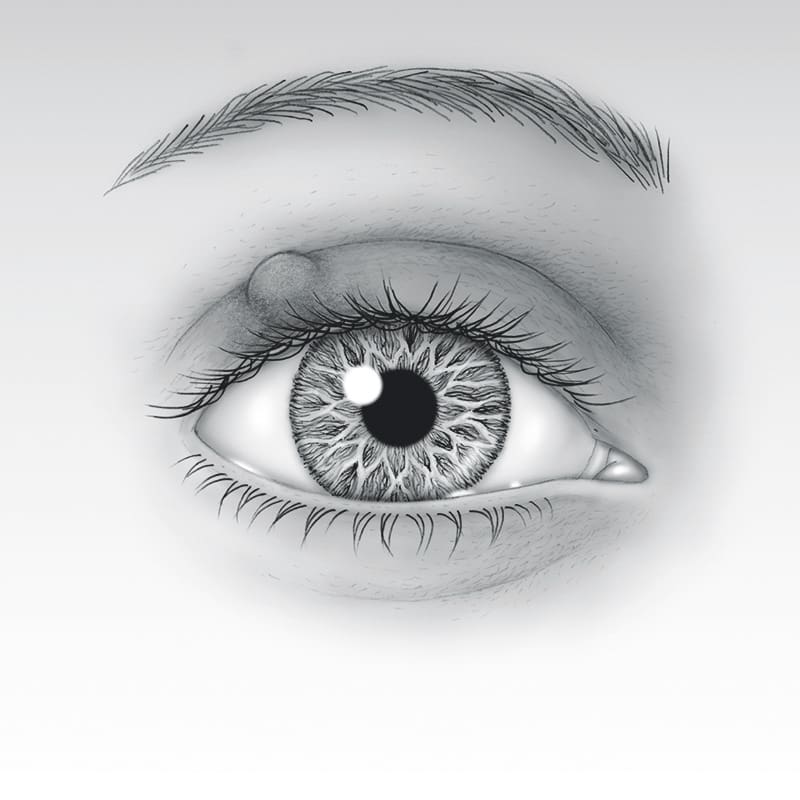Stye/Chalazion
A chalazion is a swollen lump on the eyelid. Chalazia arise from oil glands located near the eyelashes. If an eyelid gets inflamed, for any reason, these oil glands can get congested with very thick oil. The thick oil not only flows and functions poorly, but can also lead to more inflammation. When the patient’s immune system walls-off or isolates the inflamed oil gland tissue into a nodule, this is called a chalazion.
A stye is an early chalazion that can often be painful, swollen, and red. After a few weeks, the inflammation improves but a lump persists; this is when a stye becomes a chalazion.

The most common symptom of a chalazion is a non-tender or mildly tender lump on the eyelid. The lump is usually visible, sometimes red, and noticeable to the touch. A chalazion might go away if its contents drain, either through the skin surface or onto the eyeball surface.
The oil glands in a chalazion normally help keep the eye surface moist and comfortable. When these glands malfunction, the eye can feel uncomfortable, dry, irritated, or itchy. Some patients complain of a foreign body sensation under the eyelids, and some have watery eyes. The eyelashes can also develop flakes that look like dandruff. All these problems can lead to blurry vision.
Treatments
Applying warm moist compresses with gentle pressure to the affected eyelid several times daily may treat a chalazion or stye. This process is sometimes referred to as performing eyelid hygiene. The heat of the compress can help the thick oil in a chalazion become thinner, allowing it to flow out of its gland or drain better. Baby shampoo is sometimes added to the compress for the same reason and to help wash away eyelid dandruff. The heat also improves blood flow in the area, which can help clear away the inflamed tissue. The heat should not be so hot that it scalds the skin.
Your physician may prescribe drops or ointment in addition to the warm compresses. Since chalazia are usually not infected, oral or topical antibiotics may not be totally effective. Rarely a stye may become infected and need to be treated with antibiotics. Your physician may recommend an injection of steroid medicine or even surgical drainage. Although these procedures can be very effective, bleeding, bruising, infection, scar tissue formation, and recurrence are possible. As with any medical procedure, it is important to ask your surgeon about the risks and possible complications.
Risks and Complications
Bleeding and infection, which are potential risks with any surgical procedure, are very uncommon. Be sure to tell your surgeon if you are on blood thinners as their use may put you at increased risk for bleeding complications.
Your surgeon cannot control all the variables that may impact your final result. The goal is always to improve a patient’s condition but no guarantees or promises can be made for a successful outcome in any surgical procedure. There is always a chance you will not be satisfied with your results and/or that you will need additional treatment. As with any medical decision, there may be other inherent risks or alternatives that should be discussed with your surgeon.